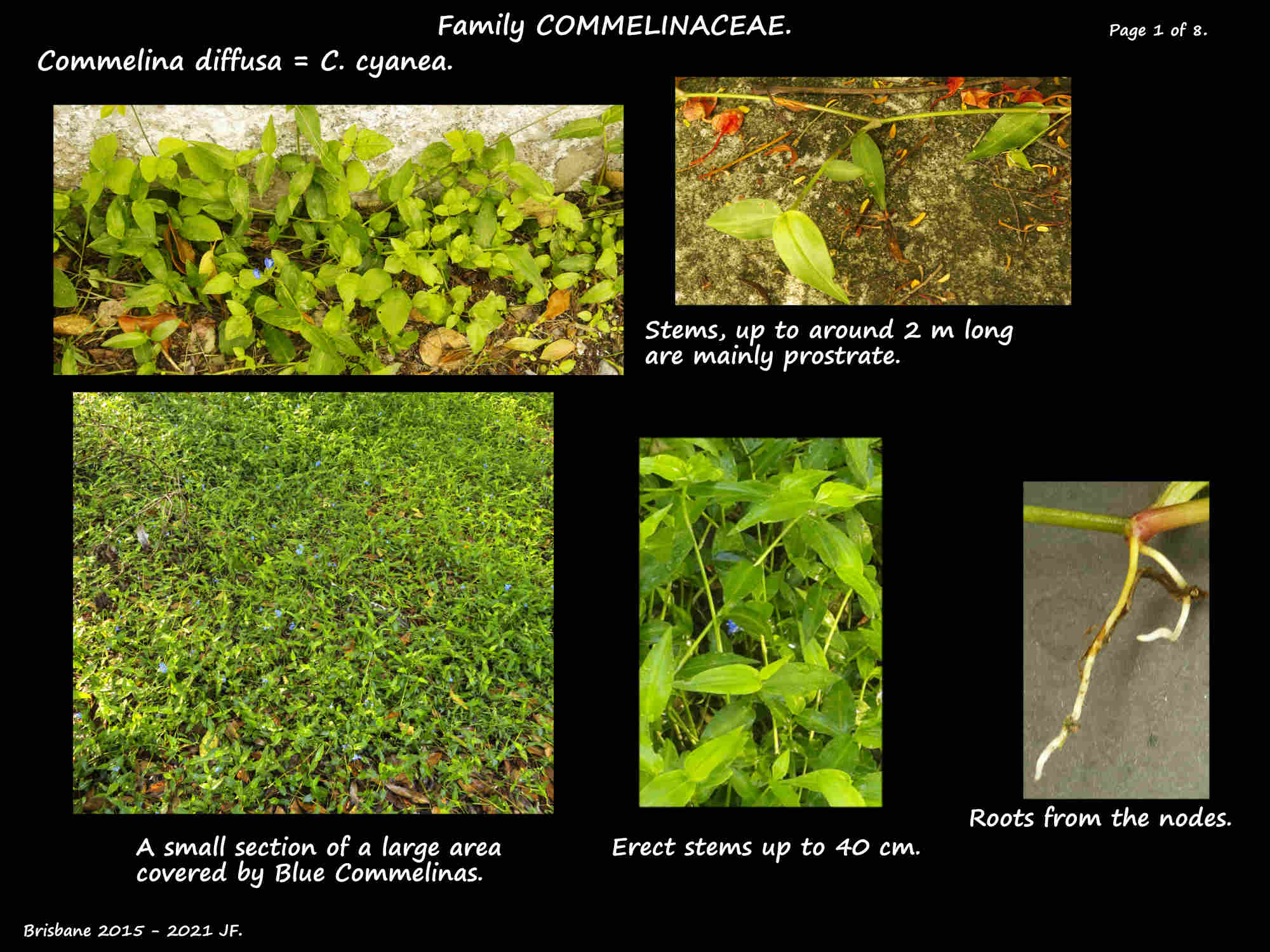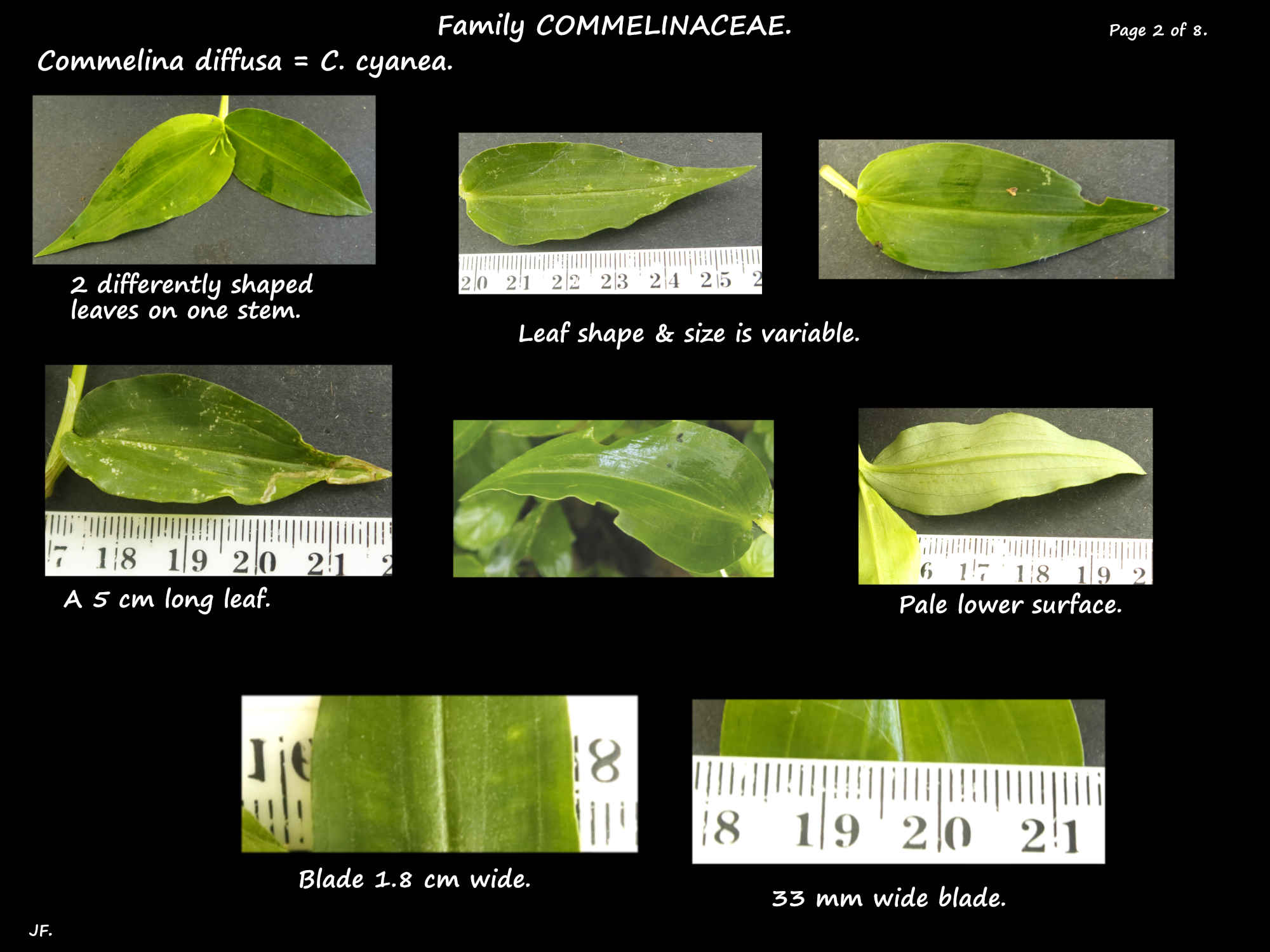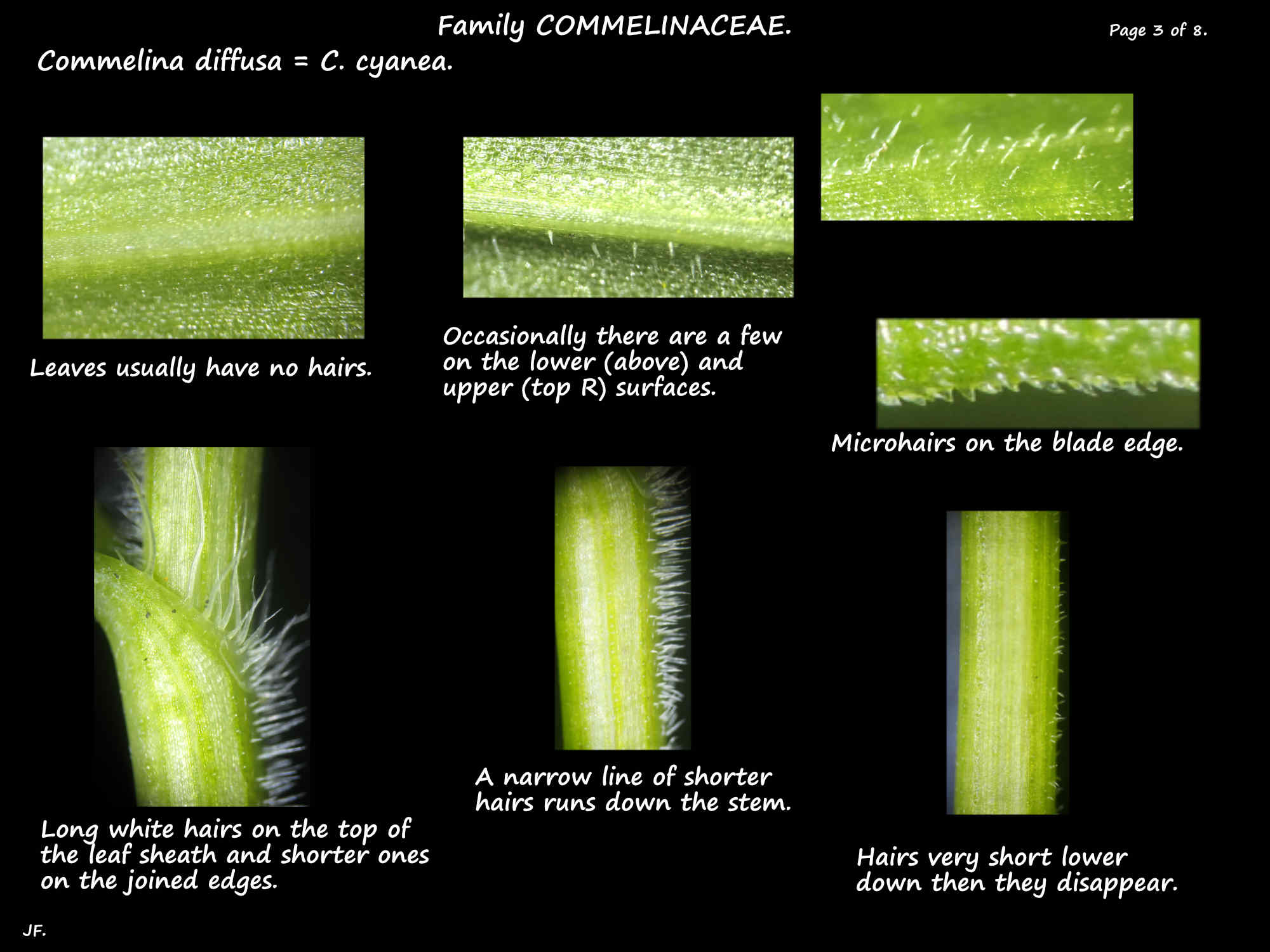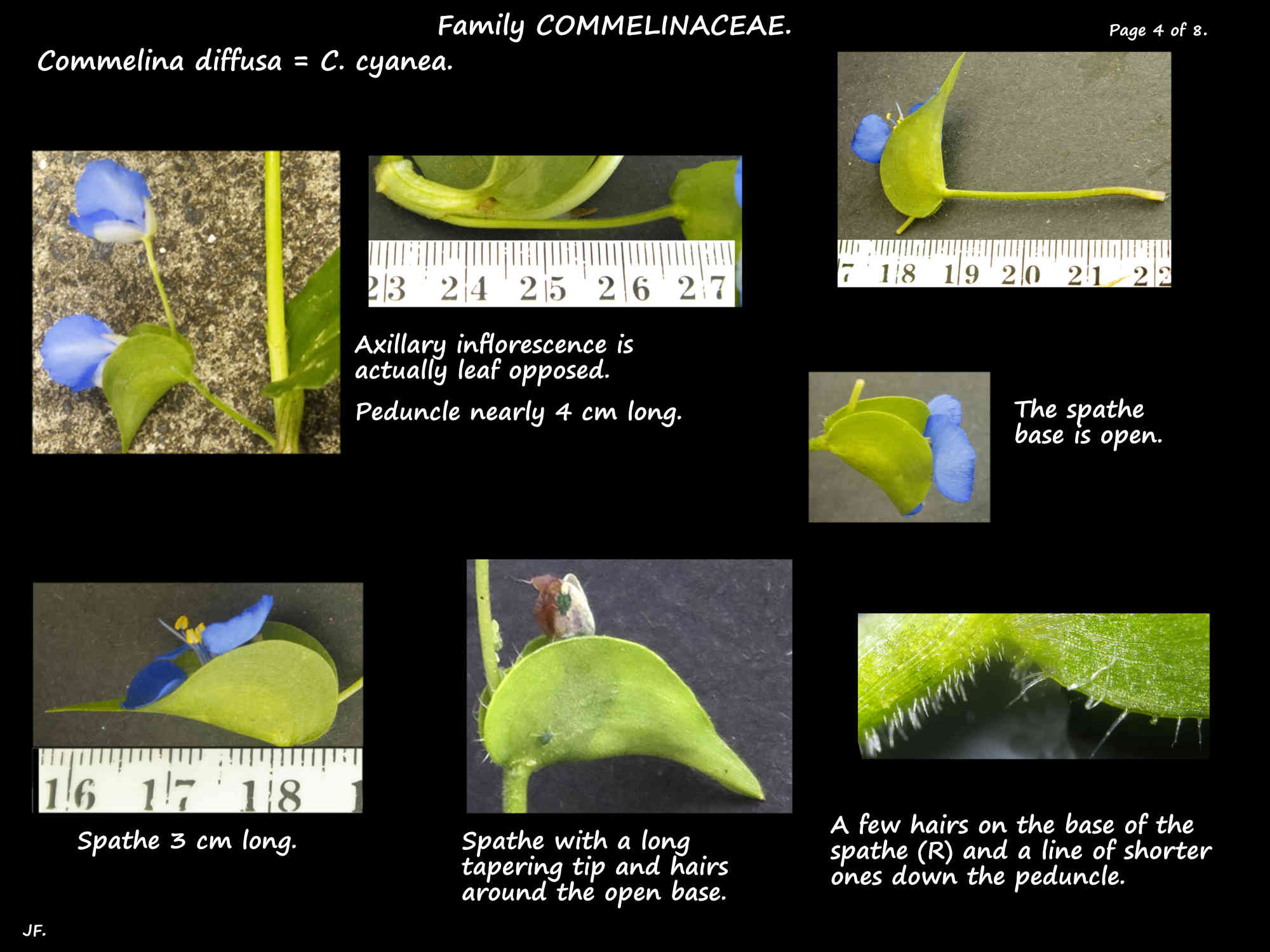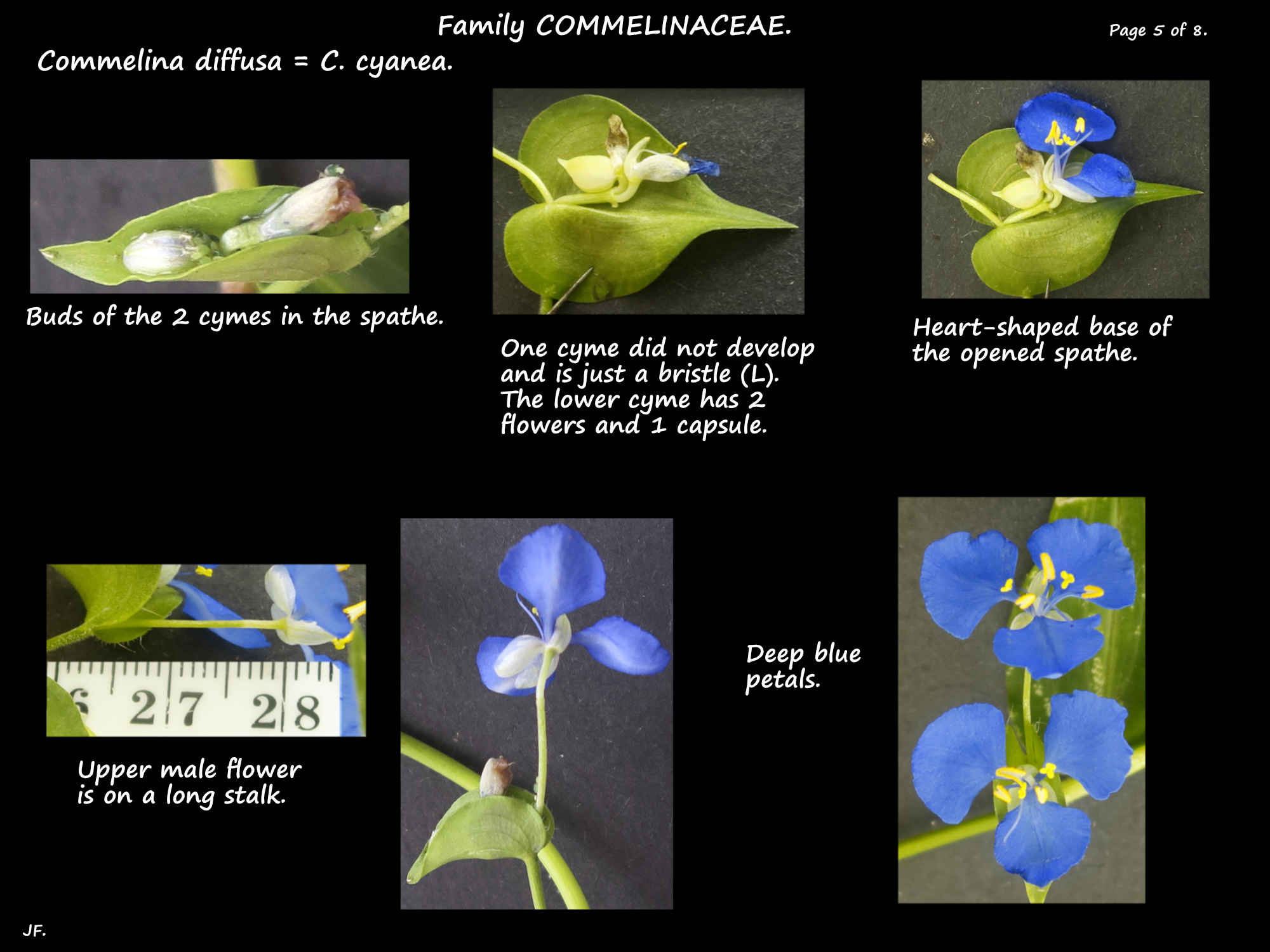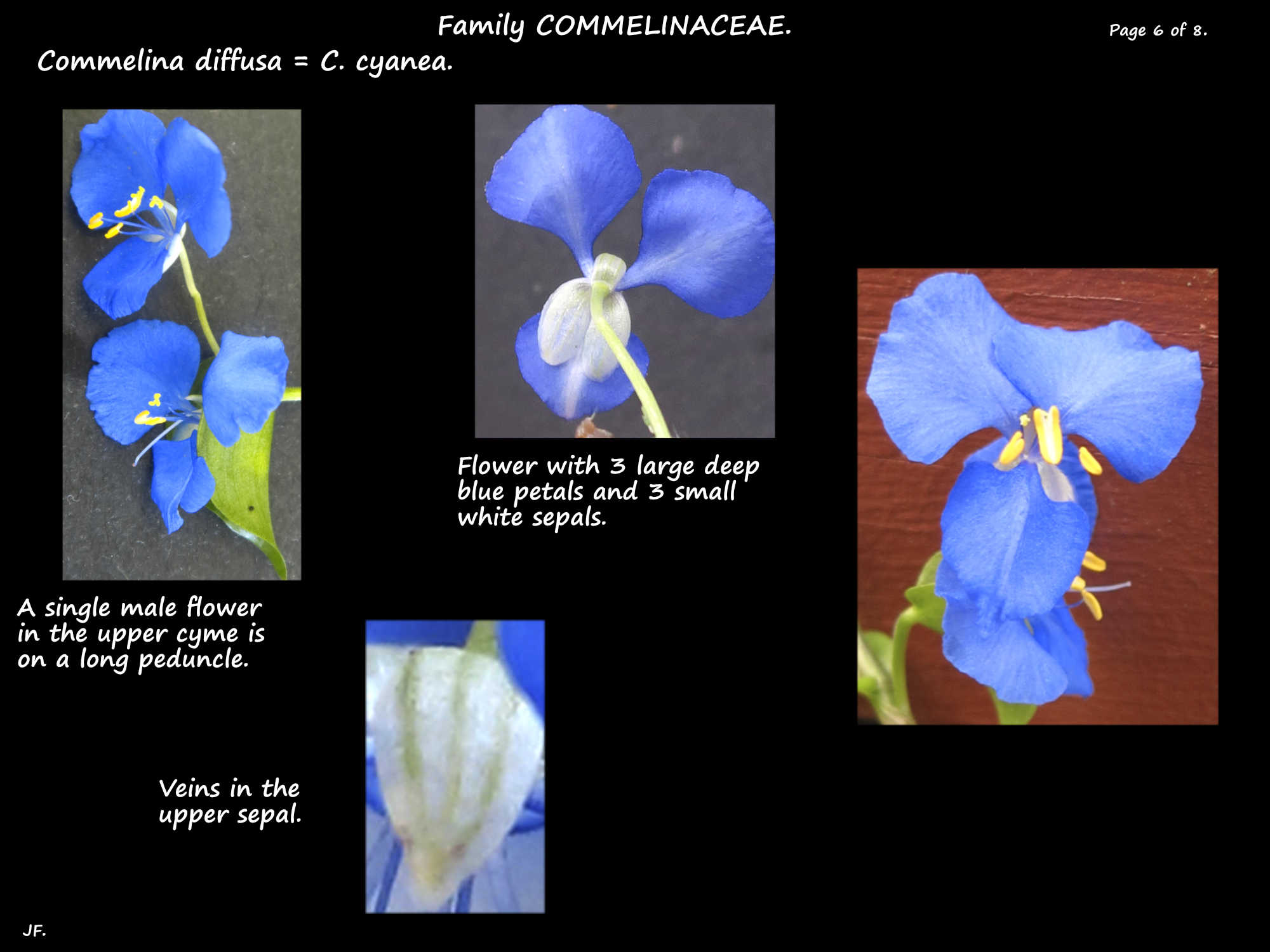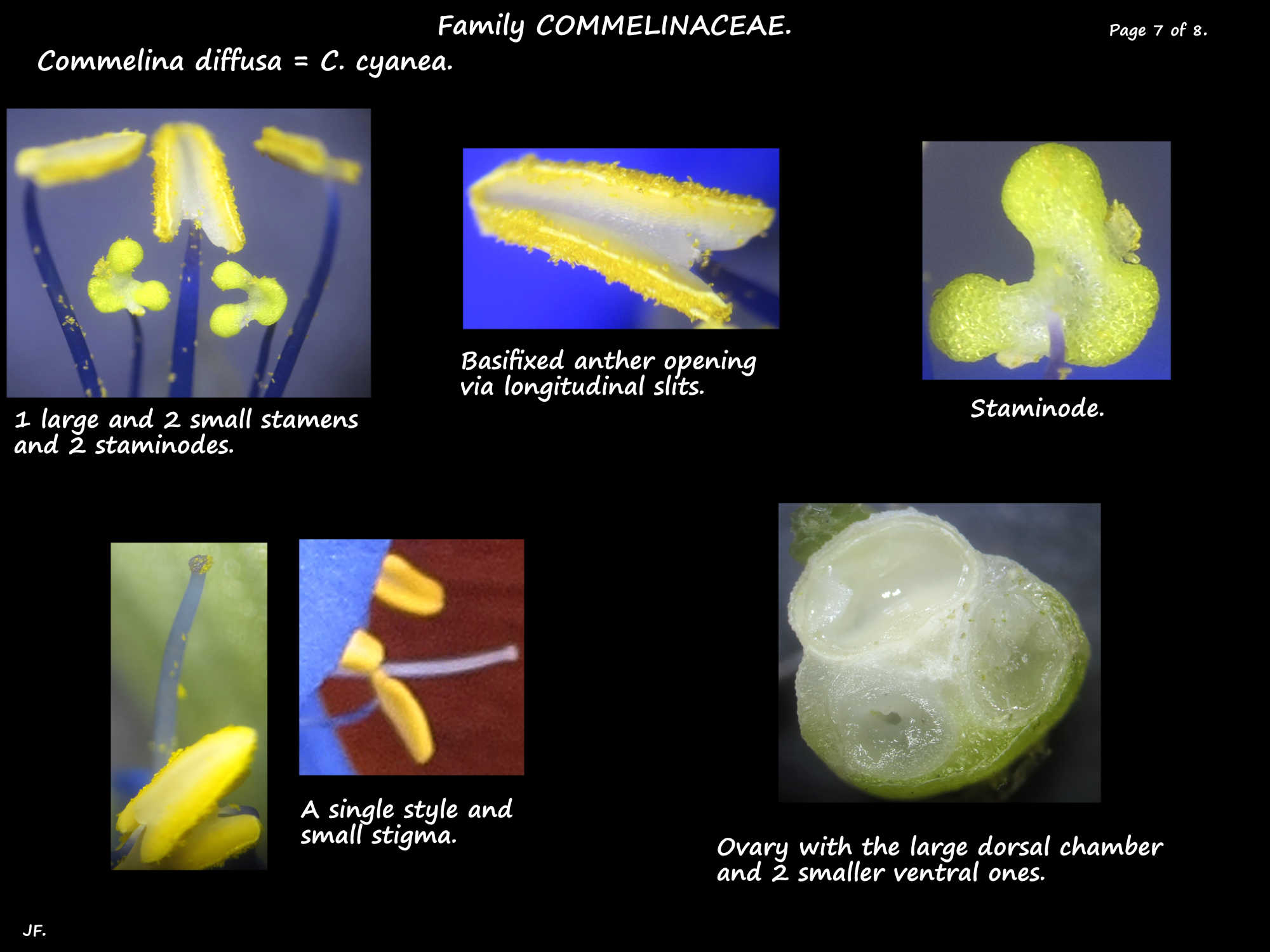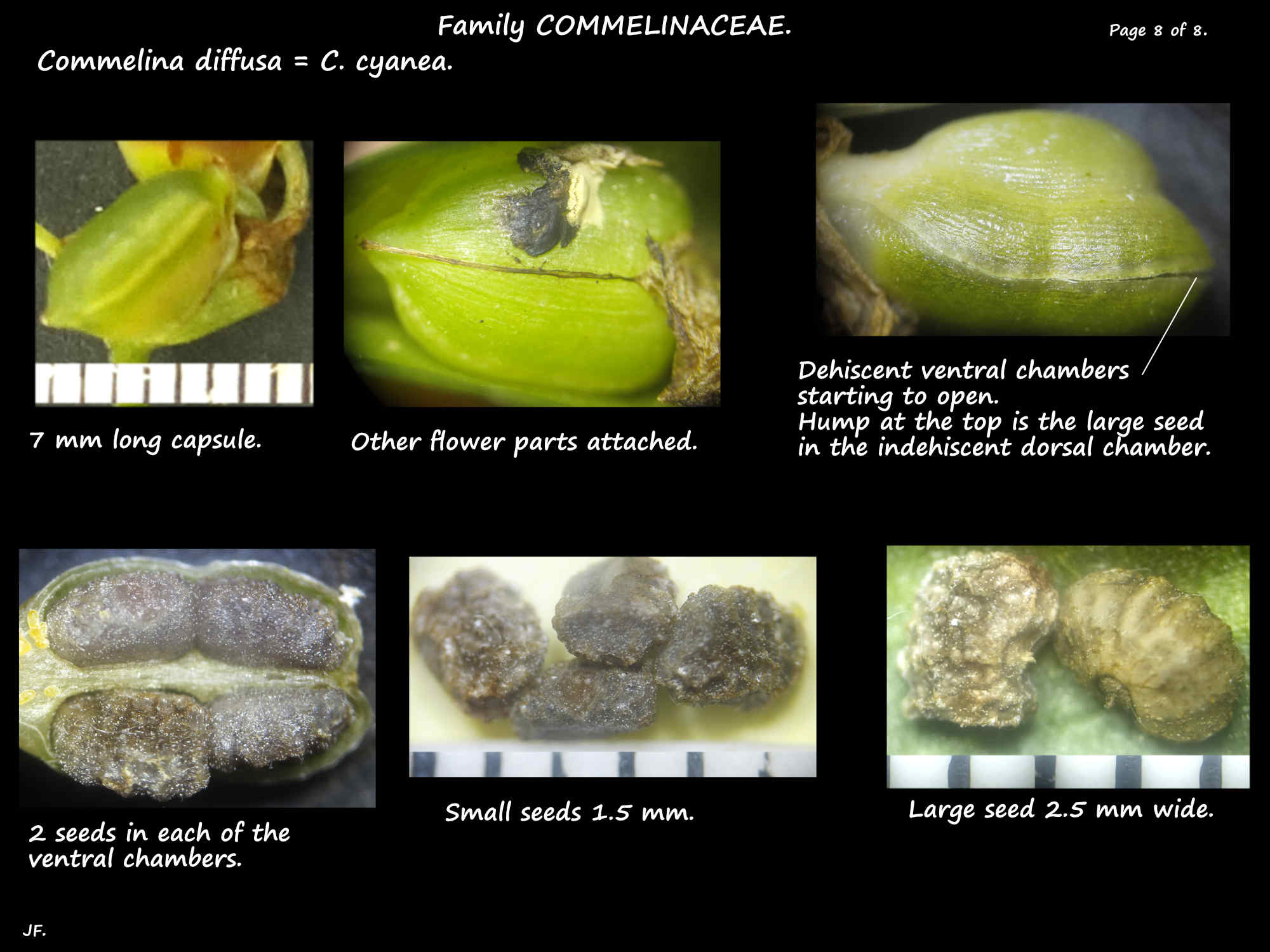Commelina diffusa = C. cyanea.
Depending on where you are in Australia Commelina cyanea may be a synonym of C. diffusa or a species.
I will treat them as the same as, if they are different species they are very similar.
The Blue Commelina or Climbing dayflower is probably native to Australia and Asia.
It is very common in S. E. Queensland.
They are annual or perennial herbs with fleshy branching stems up to 2 m long.
Stems creep along the ground and the erect branches are short but where there is support from other vegetation, rocks, etc. they will clamber over them.
The stems are oval or round in cross section.
Roots grow from the nodes and the internodes are long.
Hairs are variable ranging from none to a few or many.
The alternately arranged leaves have a short narrow base which widens into the leaf sheath.
The closed sheath is up to 2 cm long and has red lines down it.
There are long white hairs on the upper margin.
There is a line of increasingly shorter white hairs running down the sheath on the side below the joined sheath edges.
The leaf shape and size is very variable.
They can be from 2 to 15 cm long and up to 40 mm wide.
(The higher values are for descriptions of C. diffusa but this leaves a lot of overlap in the lower sizes.)
Blades are commonly ovate to wide or narrowly lanceolate and have a pointed tip.
The solitary terminal and axillary inflorescences are in a spathe which is a bract folded lengthwise.
The rounded base of the spathe is open and there is a long tapering pointed tip.
Spathes are on a peduncle up to 2 or 3 cms long.
There may be some white hairs on the peduncle and the base of the spathe.
Each spathe has 2 clusters of 1.5 cm wide flowers.
The upper cluster is on a long peduncle and the 1 (2) male flowers are held above the spathe.
The 2 or 3 bisexual flowers in the lower cluster lie within the spathe.
Each flower is on a pedicel up to 5 mm long.
Flowers have 3 small, membranous white or bluish sepals up to 4 mm long.
The 3 bright blue (occasionally white) petals have narrow claw bases.
They have rounded blades and the lower petal is slightly smaller.
The 3 fertile stamens have yellow basifixed anthers with that of the central stamen being larger.
There are 2 (3) shorter infertile staminodes with deformed and often cross-shaped anthers.
There is a superior ovary with 3 locules and a single style.
(Descriptions for C. diffusa mention a violet coloured connective on the larger anther.
I have not seen it in descriptions of C. cyanea or mentioned as a distinguishing feature between the two – if they are separate species.
I have looked at a lot of Commelinas but have never seen it.)
The fruit are capsules around 6 mm long with 3 chambers.
Two of the chambers, each holding 2 small seeds are dehiscent.
The third or posterior chamber is indehiscent and has a single larger seed.
The black or brown seeds have a wrinkled or reticulate surface.
J.F.
